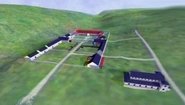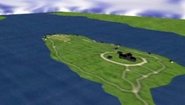-

-
-
Time Team : Season 6
-
Air date: 03 Jan '99 - 13 episodesTime Team is a British television series which has been aired on British Channel 4 from 1994. Created by television producer Tim Taylor and presented by actor Tony Robinson, each episode featured a team of specialists carrying out an archaeological dig over a period of three days, with Robinson explaining the process in layman's terms. This team of specialists changed throughout the series' run, although has consistently included professional archaeologists such as Mick Aston, Carenza Lewis, Francis Pryor and Phil Harding. The sites excavated over the show's run have ranged in date from the Palaeolithic right through to the Second World War. In October 2012 Channel 4 announced that the final series would be broadcast in 2013. Series 20 was screened in January–March 2013 and a number of specials are planned to be screened into 2014.
-
-
List of Episodes (13)
-
Time Team (1994)

-
1. Burslem, Stoke-On-Trent - Wedgwood's First Factory
03 Jan '99Everyone knows the name of Wedgwood when it comes to pottery, and this is what they have in mind, this blue and white design, it’s famous throughout the world. But few people know that it was here in Burslem on the outskirts of Stoke-On-Trent, that Josiah Wedgwood’s climb to fame and fortune first began. This is actually the site of his first factory, which was at the heart of the pottery industry when it took off in the eighteenth century, but does any of it remain under the paving stones of
-
Time Team (1994)

-
2. Papcastle, Cumbria
10 Jan '99While they were building this extension to their house here in Papcastle in Cumbria, the Buckingham family discovered this piece of Roman pottery. Can you see that little bird on the tree there? But that was just the start of their discoveries. They came up with these two quern stones, whole boxes of finds and they’ve even got what appears to be the outline of a Roman building right here. Being fans of Time Team, they contacted us because they want to find out what on Earth the Romans could h
-
Time Team (1994)

-
3. Thetford, Norfolk
17 Jan '99The pupils of this Norfolk grammar school think it’s rather special, and I’ve gotta say, they may be right. It’s not everyone who’s got this kind of stuff in their playground. These walls are the remains of a monastic church that stood here 600 years ago, but that’s modern, compared with what they think is underneath. A thousand years ago a Norman cathedral, one of the most important in the country stood somewhere round here. And the pupils want us to help them find it. So, once everyone’s g
-
Time Team (1994)

-
4. Cheddar Gorge, Somerset - Cooper's Hole
24 Jan '99It may not look very comfortable but before huts and houses, this was home. In fact this cave in Cheddar Gorge may well be one of the oldest homes in the country. Between five and ten thousand years ago, families of stoneage hunter gatherers, the old cavemen of legend, probably used this cave to eat sleep shelter and do whatever else they did. But to find what they left behind isn’t going to be easy. Thousands of years of rainfall have washed tons and tons of mud in to this cave and what an
-
Time Team (1994)

-
5. Plympton St Maurice, Devon
31 Jan '99I’m standing on top of the motte and bailey of Plympton Castle in Devon. You know mottes and baileys from your school days, they’re those great towering lumps that the Normans threw up all over the country. And these walls are all that are left of the original castle that was built here over 700 years ago. Now in towns and villages, normally the medieval stuff disappears, it gets built over and we lose it, but here in Plympton the local people believe there’s enough of it left down there, for
-
Time Team (1994)

-
6. Smallhythe, Kent
07 Feb '99You wouldn’t think that this ordinary looking field and this little drainage ditch had got much to do with England’s seafaring heritage. For a start, we're about ten miles from the sea at a place called Smallhythe in Kent. But around the time of the battle of Agincourt in the early 1400’s, somewhere round here, there was a royal dockyard big enough to build thousand ton ships. If that’s true then where are the docks now, and where’s there a river or an estuary big enough to launch those grea
-
Time Team (1994)

-
7. Beauport Park, Sussex
14 Feb '99This is the 13th hole of a golf course in East Sussex, but over here in these woods a Roman bath house has been discovered. It’s a fantastic find complete with under floor heating, tiled floors and walls right up to window height. But what is a Roman bath house doing here completely on it’s own 40 miles from the nearest Roman town, what on earth was happening around here 1900 years ago? Time Team have got just three days to find out.
-
Time Team (1994)

-
8. Reedham, Norfolk - Bombers In Reedham Marshes
21 Feb '99February the 21st 1944. 800 American bombers are returning from a raid on targets in Germany. It’s three o’clock in the afternoon, they’d been in the air for five hours and finally, they’ve left the last of the enemy fighters and flak batteries behind. Everyone relaxes as they pass over the Norfolk coast. Then... Tragedy. They were just minutes away from safety of their base when suddenly one of the bombers collided with another, and the two planes came plummeting down to earth somewhere
-
Time Team (1994)

-
9. Turkdean, Gloucestershire - Revisited
28 Feb '99Eighteen months ago, Time Team discovered under this Gloucester field what maybe one of the largest Roman villas yet excavated in Britain. We found whole ranges of rooms including a beautiful bath house arranged around three courtyards spreading all over this plateau. But at the end of the three days, just when we thought we finally understood the villa, geophysics came up with another whole range of buildings running all the way up that hillside. Could this simply mean that the villa was even
-
Time Team (1994)

-
10. Kemerton, Worcestershire
07 Mar '99In 1990 someone flew over this Worcestershire field and took this aerial photograph, you see all these extraordinary crop marks that aren’t visible from the ground. But, what are they? Well, we got two clues. A couple of fields in this direction, archaeologists have discovered vast amounts of pottery and evidence of houses and deep pits all of it Bronze age and in such large amounts. It’s considered to be of national importance. But over here is Breedon Hill, one of the largest Iron Age hill f
-
Time Team (1994)

-
11. Bawsey, Norfolk
14 Mar '99This is Norfolk, over there’s the sea. The ground round here’s pretty flat and exposed, except for this little hill here, on the top of which is this deserted church. Now we know that it’s Norman, but all around here in the fields people have been coming across pieces of metal that go back as far as the Iron Age. In fact, this is probably the richest site we’ve yet come across in Time Team. So, what was this place, what was going on here? Was it a settlement, in which case, what kind of peop
-
Time Team (1994)

-
12. Nevis,West Indies - Part 1
21 Mar '99This is the Caribbean, well we’re not in Jamaica or Barbados, Time Team have come to the tiny island of Nevis because amazingly, 200 years ago, the Caribbean produced more wealth than the whole of the rest of the British empire put together. Primarily, because of sugar, and Nevis was covered in sugar plantations, and one of the wealthiest belonged to a man called Pinney who lived right up there. And we’re going to see if we can find out what remains of his long disused estate, but buried in
-
Time Team (1994)

-
13. Nevis,West Indies - Part 2
28 Mar '99Welcome back to the Caribbean. The first English settlers arrived here in Nevis 400 years ago and set up their first capitol Jamestown somewhere over there. But amazingly, as you can see it’s completely disappeared. No sooner had the settlers arrived and they killed off the local Amerindian population. All that appears to be left of them are a few scattered patches of pottery along the coast. We’re going to try and find both Jamestown and an Amerindian site. And don’t forget, we’re still on
-



















